ROCKS
SEDIMENTARY: Sedimentary rocks are formed by sediment that is deposited over time, usually as layers at the bottom of lakes and oceans. This sediment can include minerals, small pieces of plants and other organic matter. The sediment is compressed over a long period of time before consolidating into solid layers of rock.
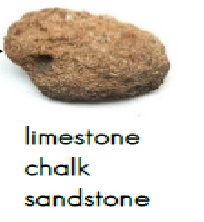
IGNEOUS: Far underground, the temperature is so hot, rock melts into a liquid (molten rock). When the liquid is underground it is called ‘magma’ and it can cool to form an intrusive rock. When it spills out (volcano), the liquid is called ‘lava’ and it cools to form extrusive rock.
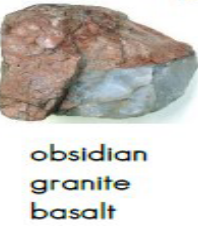
METAMORPHIC: Metamorphic rocks have been changed over time by extreme pressure and heat. Metamorphic rocks can be formed by pressure deep under the Earth’s surface, from the extreme heat caused by magma or by the intense collisions and friction of tectonic plates.
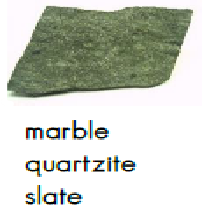
KEY PROPERTIES OF ROCKS: Hard /Soft; Permeable/Impermeable; Durability; Density.
FOSSILS
A fossil is the remains or the impression left by a prehistoric plant or animal embedded in rock.
- An animal, creature or plant dies and ends up at the bottom of the sea. It gets covered in a layer of rock.
- Over time, more layers of rock form on top and the only thing which remains are the bones or the space where the bones used to be (mould fossils).
- Sometimes sediment enters the space where the bones used to be and takes the shape of the creature (cast fossil).
- Over a long period, the sea may recede / go back leaving the rock.
- Erosion and weathering of the rock means the fossil can now be seen!
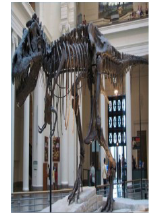
What is soil made from?
Air – Oxygen, Carbon dioxide, nitrogen etc…
Organic Matter – Living and dead plants and animals.
Water – Air and water fill the gaps between particles of soil.
Minerals – Formed from broken down rock.
Focus Scientist
Mary Anning (1799-1847) was a famous British fossil hunter who found the fossils of many prehistoric animals. Although not trained as a scientist her discoveries changed Science.
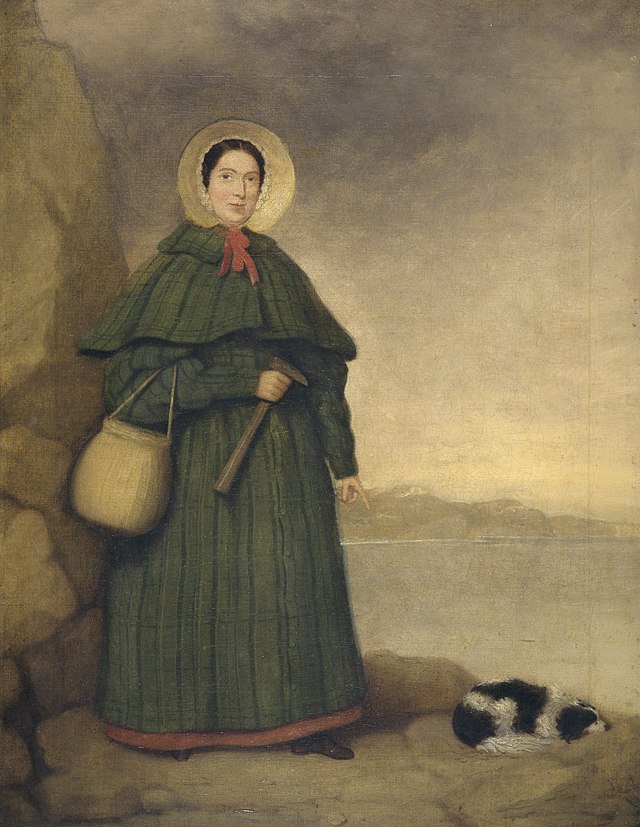
Graham Carter is an Engineering Geologist who tests soils for land contamination and for building regulations. He assesses the risks of building in certain areas.
Key Vocabulary
fossil: a fossil is the remains or the impression left by a prehistoric plant or animal embedded in rock.
rock: a rock is a solid made up of a bunch of different minerals. minerals minerals come from broken down rock.
erosion: water, wind, and other natural forces cause rocks and earth to wear away.
soil: soil is the loose upper layer of the Earth’s surface where plants grow. Soil consists of a mix of organic matter, air, water and minerals.
organic matter: living and dead plants and animals.
hard rocks: hard rocks need to be split by tools e.g. granite.
soft rocks: soft rocks can be moulded e.g. clay.
permeable: permeable rocks allow water to pass through.
impermeable: impermeable rocks do not let water pass through.
durable rocks: which are resistant to erosion so they last longer.
density: if the particles in the rock are tightly packed then it has a high density. These rocks would sink in water. Rocks with low density would float.
Objectives
Students will be able to
- identify that humans and some other animals have skeletons and muscles for support, protection and movement.
Key Vocabulary
vertebrate: animals with backbones
invertebrate : animals without backbones
muscles :soft tissues in the body that contract and relax to cause movement
joints: areas where two or more bones are fitted together
Skeletons do three important jobs:
- protect organs inside the body;
- allow movement;
- support the body and stop it from falling on the floor.

Skeleton Worksheets
Sorting Skeleton types
The human skeleton is made up of 206 separate bones. Many have special names.
Skeleton Functions
Our skull protects our brain with a covering of hard bone. Our rib cage protects our heart and lungs, but has the flexibility to rise and fall as we breathe. without a skeleton, we couldn’t stand or sit up and support our bodies.
